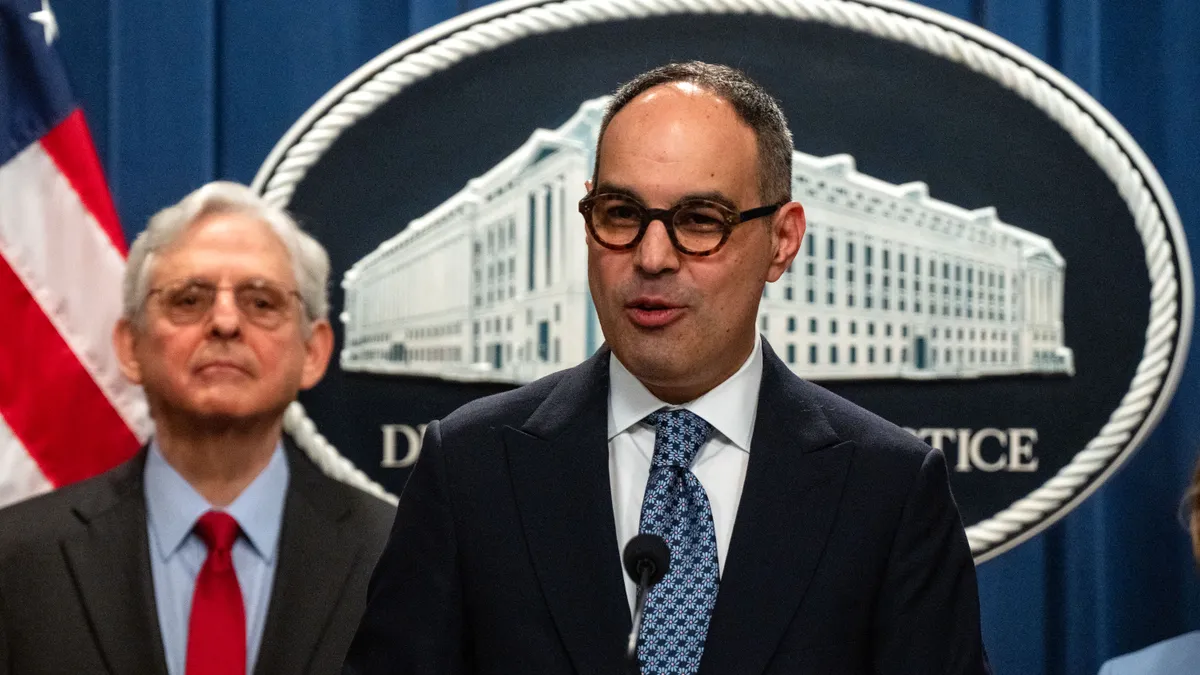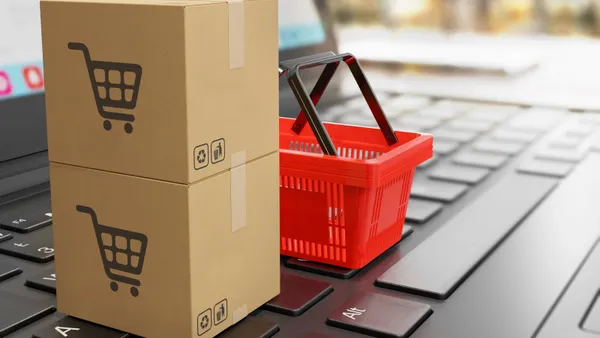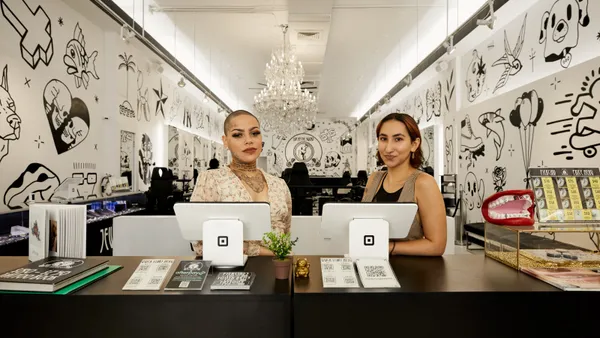Dive Brief:
- Eyeing continued growth as e-commerce trends normalize, Affirm Chief Financial Officer Michael Linford said Tuesday the buy now-pay later company’s Debit+ card is a key part of its strategy to push further into brick-and-mortar sales.
- Affirm gained steam with “larger, considered purchases online,” Linford said. But the debit card is part of the company’s attempt to “crack the offline nut” and capture more of consumers’ everyday spending, Linford said during a webcast with Bank of America Equity Research analyst Jason Kupferberg. “As an industry, I don’t think anybody has really solved [the physical store] problem with great success.”
- Early testers are using Affirm’s card to make purchases about three times a week, Linford said. The mix of merchants where consumers are using the card is about half offline and half online, “which for us is really encouraging, because it’s breaking through that offline purchase modality that we really weren’t able to get to to date,” he said.
Dive Insight:
In May, Affirm said the card — which lets customers pay upfront, via a link to their bank account, or access the company’s BNPL financing — was rolled out to tens of thousands of consumers through a beta program. Affirm Spokesperson Matthew Gross said Thursday the card’s rollout is still ongoing, but wouldn’t share how many customers currently have the card.
BNPL thus far has been a largely online payment method, although there is some limited volume coming from brick-and-mortar purchasing, said Sheridan Trent, director of market intelligence with payments consulting firm The Strawhecker Group.
However, new products from BNPL providers such as Affirm’s debit card and Swedish rival Klarna’s card mean those players are increasingly “moving to a sort of banking-type model,” she said in an interview. Block’s purchase of Australian BNPL player Afterpay has enabled Square sellers to offer the installments option, including for in-person purchases.
E-commerce isn’t going anywhere, Linford noted Tuesday, but a huge share of retail sales are still happening offline. That’s especially true at this phase of the COVID-19 pandemic, as shoppers have returned to stores.
“If we can bring our solutions to that context, there’s obviously a ton of growth,” Linford said. “It’s a real area of focus for us.”
Kupferberg pointed out initial financial guidance Affirm has shared for fiscal year 2023 doesn’t include any contribution for the debit card. Linford said the company does expect to incorporate that into its financial outlook at some point, but added Affirm is being “really careful to not give any timeline.” Right now, it’s not material enough to be included in the year’s guidance, he said. Affirm has projected full year revenue for FY 23 between $1.6 billion and $1.7 billion and gross merchandise volume between $20.5 billion and $22 billion.
After its fiscal year ended June 30, Affirm reported in August that revenue jumped 55% to $1.35 billion for the full year. However, the company posted a $707.4 million loss for the full year, compared to $441 million for the previous fiscal year.
The rising interest rate environment does increase the company’s costs, but “on a slower timeline than I think most folks have been thinking about,” Linford said. Affirm tries to secure funding for loans before they are originated on its platform, which provides “some shock absorbers” when it comes to higher interest rates, he said.
In light of the current economic environment, Affirm plans to be prudent with investments while pursuing growth opportunities.
“We have continued to repeat our commitment to get to profitability on an adjusted operating income basis by the end of this year, despite the rate environment being as volatile as it is,” Linford said.
As the inflationary environment stresses some consumers, BNPL companies are tightening their underwriting standards. Linford said Affirm employs “very specific and scalpel-type approaches” to lending decisions, using risk-reducing levers such as having consumers make down payments and adjusting term lengths to maintain approvals.
“So much of the work that we’ve done is to find ways to be able to say yes to the consumers,” Linford said.











